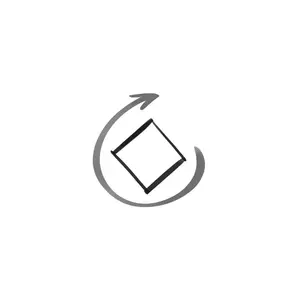3D Modelling – Personal

3D Modelling is a physical process. Participants create a sculpture that represents their current situation and the emerging possibilities of their work and life.
The process prompts questions from four vantage points, allowing for 360-degree seeing and sensing of an emerging future. The power of the practice lies in participants relying on their hands, rather than on habitual ways of thinking, to discover new insights.
Goal
- Create visual displays that explain projects and engage potential stakeholders. The modelling can be applied on any scale.
- Create an external view of a current challenge to identify systemic factors that are causing it.
- Sense, surface, and activate inherent possibilities.
Instructions
Process
Setup
- People: Pairs.
- Place: 3D Modelling is best done in person, though with some digital creativity can be adapted for virtual teleconferencing or meetings.
- Time: Allow 30 minutes for the process for each partner – a total of 60 min. In addition, the facilitators need to set aside time to prepare the room.
- Materials:
- Small tables that allow the two partners to move around the model and view it from different sides. You could also build the sculpture on a large sheet of cardboard or a large cardboard box.
- Journals or paper for taking notes.
- 3D Modeling Kits for each pair, with objects to represent different aspects of the system. We encourage you to source the kits sustainably, using materials that you already have. Examples of items to include are: pipe cleaners in different colors; items easily found in nature, such as pine cones, stones, and twigs; playdough or clay; wool, string, and pieces of fabric; small figurines or toys.
- An assortment of materials is used to symbolically represent the system’s forces at play. Anything can be made to represent anything.
Step 1: Orientation (~5 mins.)
- Introduce yourselves. Decide who will create the sculpture and who will be the coach.
- The “sharer” communicates what they intend to focus on in the situation or system.
Step 2: Sculpt the Current Reality (~10 mins.)
- The person who begins the sculpting process describes what they are building while placing the objects. Pause between each addition so that the coach understands what has been added and the relationships between the parts.
- The coach listens deeply to what the builder of the sculpture shares.
Step 3: Reflect from Four Directions (30–40 mins.)
Gather on the east side of the sculpture. The coach reads the first set of questions aloud, one by one,
listening deeply as the builder responds. The pair then shifts to the next side of the sculpture. It is
important to physically move to experience multiple perspectives.
Questions:
1. EAST: Feeling
- What do you love in this sculpture that ignites your best energy?
- When you look at this situation, what other emotions come up?
- If this emotion could talk, what would it say?
2. SOUTH: Truth
- What hard truths need to be spoken?
- What’s at risk for this situation to change?
- What’s at risk for it to stay the same?
3. WEST: Reflection
- What assumptions might be underlying this situation?
- If this situation were designed for you to learn, what might it be trying to teach?
4. NORTH: Purpose/Presence
- What in this situation is ending, wanting to die, and what is emerging, wanting to be born?
- If this sculpture could speak, what advice might it offer?
Step 4: Adjust the Sculpture (~5 mins.)
Add, remove, and rearrange the objects so that the sculpture better represents the emerging future you want to create.
Step 5: Wrap Up (~5 mins.)
- When all steps are complete, allow a few moments to pause in stillness.
- What is the first step you will take to bring this emerging future to life?
- Gently move the sculpture to a safe space, and when ready, take it apart with care.
Step 6: Change Roles
- Prepare the space so you can switch roles.
- Repeat the process.
Attachments
- 3D modelling cover.webp
Background
Reproduced under CC License and with credit to the Presencing Institute.
Author
Facilitation methods and techniques reproduced in the SessionLab Library under the appropriate Creative Commons license. All methods contain attribution to the source material and are reproduced with permission.
More about author